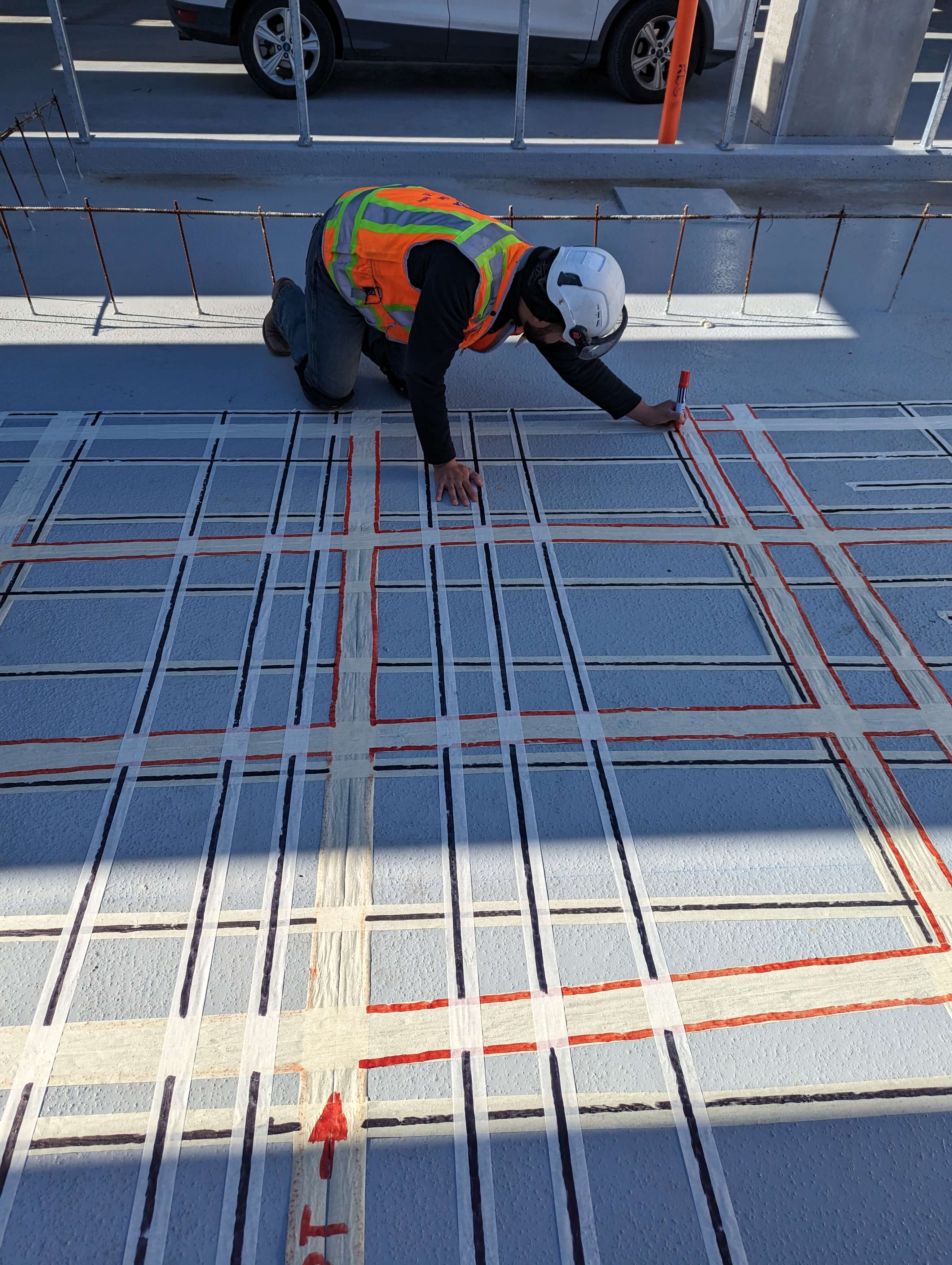Professional Tips for Ideal Concrete Scanning Outcomes
Professional Tips for Ideal Concrete Scanning Outcomes
Blog Article
Past the Surface Area: Leveraging Advanced Concrete Scanning Techniques for Unmatched Accuracy and Understanding
In the realm of building and construction and infrastructure maintenance, the mission for accuracy and thoroughness is endless. Advanced concrete scanning techniques have arised as essential tools in this pursuit, offering a glance underneath the surface area to unveil a globe of essential understandings. By utilizing advanced technologies, professionals can uncover abnormalities, assess the condition of concrete frameworks, and make educated choices that shape the course of jobs. The ramifications of these techniques prolong far beyond simple surface-level examinations, assuring a deepness of accuracy and understanding that is unequaled.
Significance of Advanced Concrete Scanning
The value of making use of advanced concrete scanning methods lies in the unmatched accuracy they supply for identifying sub-surface abnormalities and ensuring structural integrity. By employing cutting-edge modern technologies such as ground-penetrating radar (GPR), electromagnetic induction, and progressed finder imaging, construction professionals can dive under the surface of concrete frameworks with a degree of accuracy that far goes beyond typical evaluation methods. Concrete Scanning. These strategies enable the recognition of covert risks like rebar corrosion, voids, conduits, or post-tension wires that can compromise the security and safety and security of a framework gradually
In addition, progressed concrete scanning provides invaluable understandings right into the overall problem of a concrete element without the need for intrusive steps, decreasing the risk of triggering damage during the analysis procedure. The ability to pinpoint the specific place and depth of prospective issues enables targeted repairs and upkeep, eventually prolonging the life expectancy of the structure and optimizing its efficiency. Fundamentally, the value of advanced concrete scanning can not be overstated in the world of construction and infrastructure upkeep, where precision and reliability are paramount.
Sorts Of Cutting-Edge Technologies

Anomalies and Issue Detection

In addition to GPR, concrete scanning strategies like thermography and impact-echo testing are additionally efficient in identifying issues and anomalies. By leveraging these advanced strategies, professionals can proactively address architectural issues, making sure the long life and safety and security of concrete frameworks.
Assessing Concrete Condition
How can designers properly examine the problem of concrete frameworks to guarantee their long life and safety? Evaluating the concrete problem is a crucial element of maintaining infrastructure integrity. Various sophisticated concrete scanning methods are used for this objective. Ground-penetrating radar (GPR) is generally utilized to analyze the internal structure of concrete, identifying spaces, fractures, and other abnormalities that may endanger its stamina. In addition, impact-echo testing can supply understandings into the thickness and integrity of concrete aspects. Ultrasonic pulse speed screening is an additional valuable technique for reviewing concrete high quality by gauging the rate of audio waves with the product. official source
In addition, aesthetic evaluation stays a you could try this out fundamental part of concrete condition assessment. Engineers aesthetically examine the surface for signs of deterioration, such as spalling, breaking, or discoloration. Integrating non-destructive testing approaches with aesthetic inspections allows for a comprehensive examination of concrete problem, making it possible for designers to identify possible issues early on and implement timely maintenance or repairs. By leveraging these sophisticated strategies, designers can make certain the lasting toughness and safety of concrete structures.
Enhancing Decision-Making Procedures
In the world of infrastructure administration, enhancing decision-making procedures is crucial for guaranteeing the reliable maintenance and long life of concrete structures. Enhanced decision-making processes in concrete monitoring entail utilizing innovative scanning methods to gather detailed data on the condition of structures. By leveraging innovations such as ground-penetrating radar and 3D imaging, stakeholders can make informed decisions relating to replacement, repair work, or reinforcement methods.
These progressed scanning techniques give invaluable understandings right into the inner composition of concrete, determining prospective concerns such as gaps, splits, or corrosion that may not be visible on the surface. This level of comprehensive information permits for aggressive upkeep planning, decreasing the threat of structural failings and boosting the overall life-span of concrete frameworks.
Moreover, by incorporating digital paperwork and analysis devices into the decision-making process, stakeholders can track the evolution of concrete conditions over time, enabling anticipating maintenance methods and enhancing resource allotment. Ultimately, the integration of innovative concrete scanning techniques enhances decision-making processes by giving unequaled accuracy, insight, and efficiency in framework monitoring.
Verdict
To conclude, advanced concrete scanning techniques offer unrivaled accuracy and understanding in spotting abnormalities, issues, and analyzing the condition of concrete structures. By leveraging innovative modern technologies, decision-making processes can be enhanced, bring about even more educated and reliable options for maintaining and fixing concrete framework. These strategies play a crucial role in ensuring the safety and security and longevity of concrete frameworks, making them a vital tool in the area of building and construction and engineering.
Moreover, advanced concrete scanning supplies very useful understandings into the overall problem of a concrete aspect without the demand for invasive actions, continue reading this lessening the threat of causing damages throughout the evaluation process - Concrete Scanning. Another innovative modern technology is 3D X-ray scanning, which offers in-depth pictures of the interior structure of concrete, using valuable info without the requirement for damaging screening. Additionally, Concrete Cover Meters are made use of to gauge the density of concrete cover over support bars accurately. Enhanced decision-making procedures in concrete monitoring include using advanced scanning methods to gather thorough data on the problem of frameworks.In final thought, progressed concrete scanning methods supply unmatched accuracy and insight in detecting anomalies, flaws, and assessing the problem of concrete frameworks
Report this page